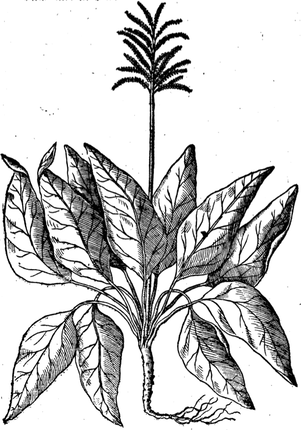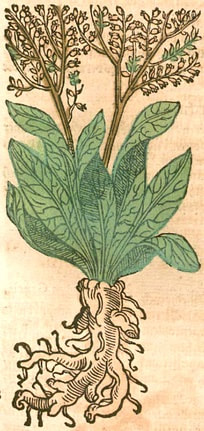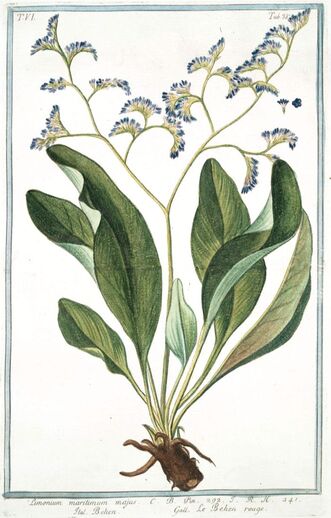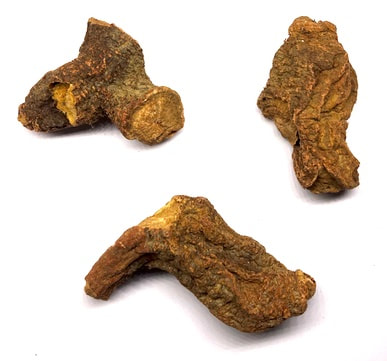Sentry Page Protection
Salvia haematodes, Red Behen
Meadow Sage
Behman Surkh (Red behen, Unani)
Behman Safaid (White Behen, Unani)
Behman Surkh (Red behen, Unani)
Behman Safaid (White Behen, Unani)
Limonium maritimum (Sea Lavender) is often listed as a source of Red Behen
(Source New York Public Library's Digital Library) (Wikimedia)
(Source New York Public Library's Digital Library) (Wikimedia)
Red Behen root
(Calcutta Unani College, Adam, 2019)
(Calcutta Unani College, Adam, 2019)
Botanical name:
Salvia haematodes (syn. Salvia pratensis subsp. haematodes)
White Behen is Centaurea behen
Parts used:
Root
Comes from Syria, cut in pieces; like a wild Parsnip; brown internally and externally
Temperature & Taste:
Warm, dry. Sweet, Pungent.
Salvia haematodes (syn. Salvia pratensis subsp. haematodes)
White Behen is Centaurea behen
Parts used:
Root
Comes from Syria, cut in pieces; like a wild Parsnip; brown internally and externally
Temperature & Taste:
Warm, dry. Sweet, Pungent.
Uses:
1. Benefits Kidneys, Strengthens Yang:
-Impotence, Erectile Dysfunction
-thickens Sperm to prevent Premature Ejaculation
-Kidney Stones
2. Tonifies Spleen, Increases Qi:
-weakness, poor digestion
-increases energy and stamina; strengthening and fattening; Convalescence.
-Asthma and Sweating from deficiency
3. Nourishes the Blood, Benefits the Heart and Liver:
-Liver and Blood tonic; anemia; nourishes skin and hair
-Amenorrhea or scanty Menses associated with Blood deficiency
-Habitual miscarriage
-Cardiac tonic; strengthens the Heart and circulation
Dose:
Powder: 500mg–3 grams
Decoction: 3–6 grams
Comment:
The Behens were not known to the Greeks but were introduced by the Arab physicians. The exact identification was unknown to many authors so substitution was common throughout Europe. They appeared in a number of Arabic tonic formula. The White can be looked at as a Qi tonic, the Red a Blood tonic, both having strengthening effects on the Kidneys.
Substitutes:
In most cases, the combination of Dang Gui and Withania (or Ginseng) can replace the two Behens.
1. Parsnip root
2. Red Carrot
3. Angelica
4. Zedoary
5. Common Limonium root is generally used in its place (Pomet)
6. Dang Gui is a good substitute as a Blood tonic.
7. Some authors have considered Red Behen and Sage (Salvia officinalis) to be interchangeable. This seems unlikely however.
8. The Chinese Salvia Dan Shen (Red Sage) may also have similar properties. Older TCM authorities said it had Blood tonic effects, although weak, while its Blood-moving effects were strong.
Powder: 500mg–3 grams
Decoction: 3–6 grams
Comment:
The Behens were not known to the Greeks but were introduced by the Arab physicians. The exact identification was unknown to many authors so substitution was common throughout Europe. They appeared in a number of Arabic tonic formula. The White can be looked at as a Qi tonic, the Red a Blood tonic, both having strengthening effects on the Kidneys.
Substitutes:
In most cases, the combination of Dang Gui and Withania (or Ginseng) can replace the two Behens.
1. Parsnip root
2. Red Carrot
3. Angelica
4. Zedoary
5. Common Limonium root is generally used in its place (Pomet)
6. Dang Gui is a good substitute as a Blood tonic.
7. Some authors have considered Red Behen and Sage (Salvia officinalis) to be interchangeable. This seems unlikely however.
8. The Chinese Salvia Dan Shen (Red Sage) may also have similar properties. Older TCM authorities said it had Blood tonic effects, although weak, while its Blood-moving effects were strong.
Main Combinations:
The Two Behens (Red and White Behen) were nearly always used together being combined with other tonics like Salep (Orchis spp.), Asparagus root, Withania, Tribulus seed etc.
1. Aphrodisiac:
i. combine both Behens with Withania, Tribulus and Mucuna
ii. for those with a cold and moist temperament, both Behens with Triphala, Long Pepepr, Ginger, Orchid, Ash tree keys, Sesame seed, Mace (as in Triphala Electuary Greater of Unani)
2. To Warm and strengthen the Kidneys, both Behens with Pistachio, Sweet Almond, Orchis, Sea Holly root, Asparagus root, Linseed, Rocket seed, Clove, Nutmeg (as in Antidote for Cold Lumbar, for Venery, and Defect of Semen)
3. Infertility, both Behens with Turnip seed, Ash tree key, Cinnamon, Clove, Long Pepper, Rosemary, Marjoram, Pennyroyal, Balm (as in Confection for Impregnation)
4. To warm and strengthen the Heart, both Behens with Mastic, Cinnamon, Basil, Pearl, Red Coral, Amber, Indian Spikenard, Chebulic Myrobalan (as in Powder to Warm the Heart)
5. To promote Happiness, both Behens with Chebulic Myrobalan, Emblic Myrobalan, Cinnamon, Balm, Citron peel, Mastic, Saffron, Nutmeg, Greater Cardamon, Peony, Basil seed (as in Letificans Almansoris of Rhasis)
Major Formulas:
Powder of Musk Sweet (Diamoschu Dulce) (Mesue)
Powder to Warm the Heart
Cordial Powder
Warming Powder of Gems (Mesue)
Warming Pearl Powder (Diamargariton Calidum) (Avicenna)
Powder to Ascertain if Pregnant (Gabelhover)
Letificans Almansoris (Rhasis)
Restorative of Nicholas (Pleres Arconticon) (Nicholas)
Electuary of Pearl (Avicenna)
Electuary of Gems (Mesue)
Electuary of Aloeswood (Diaxyloaloes) (Mesue)
Electuary for Sadness and Worry
Electuary for a Duke (Electuarium Ducis) (Nicholas)
Confection for Impregnation (Renodeus)
Confection for Infertility from Cold
Special Confection for Scoliosis
Antidote for Cold Lumbar, for Venery, and Defect of Semen (Nicholas)
Triphala Electuary Greater (Unani)
Triphera of the Saracens (Triphera Saracenica Magna)
Cautions:
Generally safe.
Large doses or long-term use are unsuitable for those with a hot temperament.
Toxicity
Oral LD50 in mice was 2.3 g/kg body weight.
Main Preparations used:
Generally safe.
Large doses or long-term use are unsuitable for those with a hot temperament.
Toxicity
Oral LD50 in mice was 2.3 g/kg body weight.
Main Preparations used:
Click the Tabs above for more information on this Medicine




